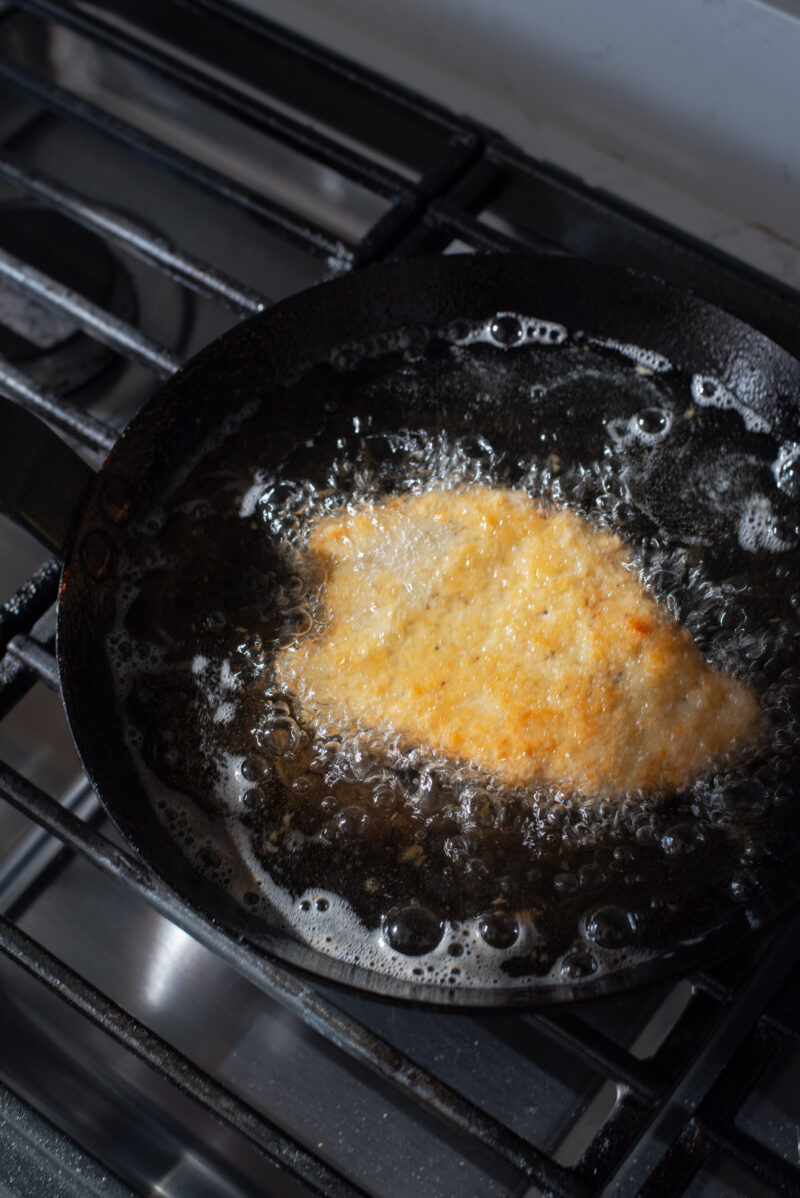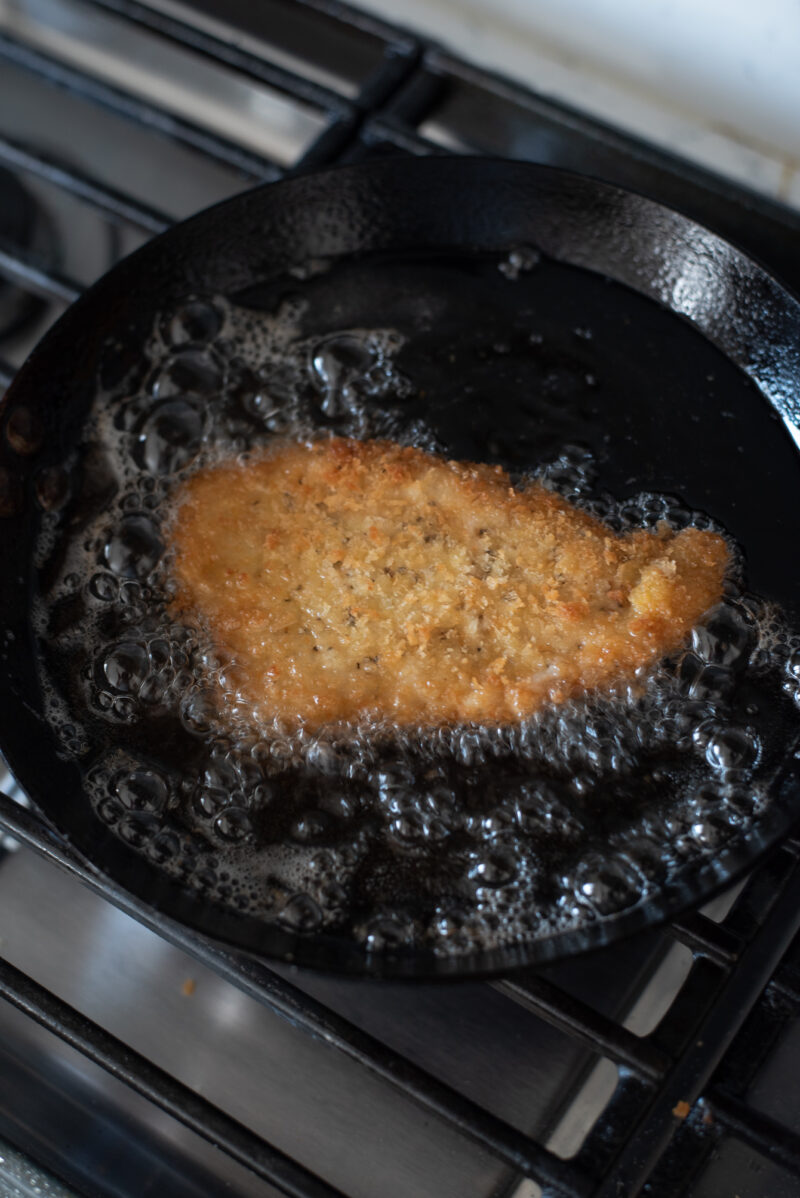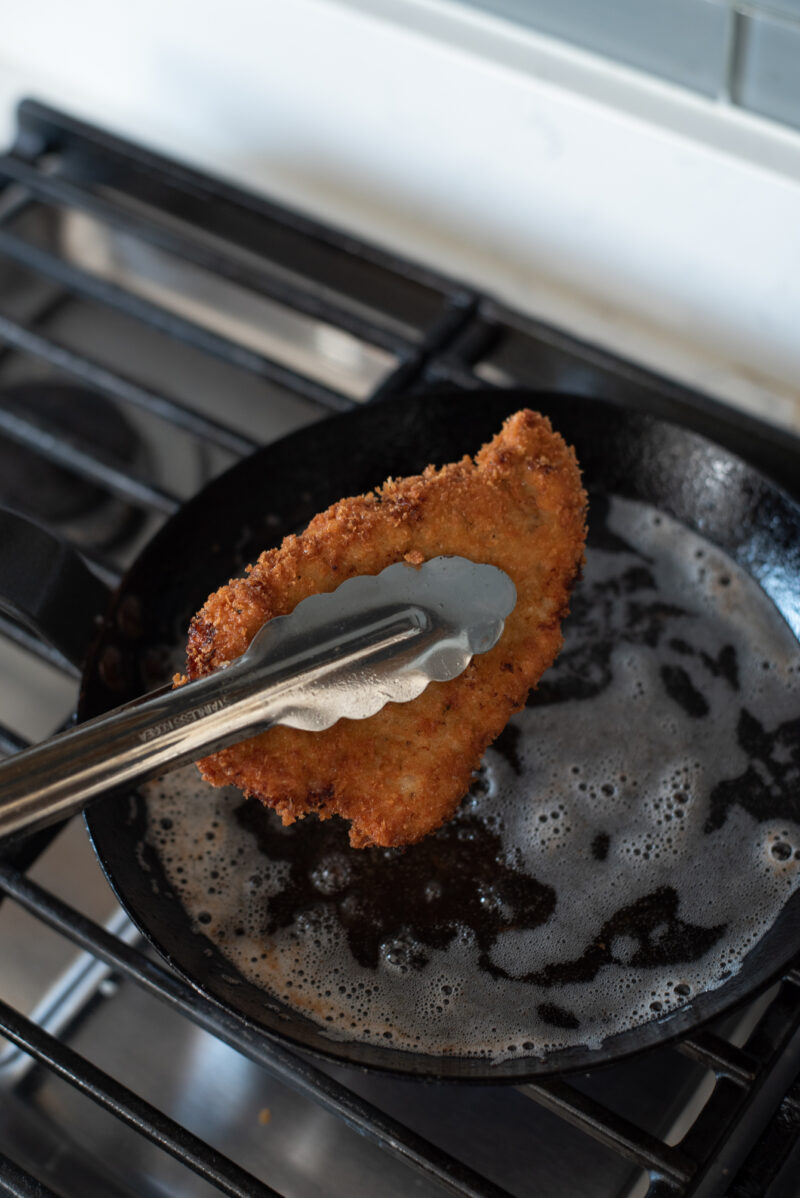30-Minute Easy Tonkatsu: Japanese Pork Cutlet Recipe
Learn to make crispy Tonkatsu, a popular Japanese pork cutlet dish, in just 30 minutes! This recipe ensures a cutlet that’s crispy on the outside and incredibly juicy on the inside. Plus, the irresistibly tangy homemade Tonkatsu sauce can be easily whipped up using just a few pantry staples.

Are you craving crispy, golden-brown Tonkatsu with tangy homemade sauce? It’s the perfect dish that everyone would enjoy for dinner.
When my kids were younger, I often prepared my Tonkatsu recipe for their playdates, serving it as a dinner treat. To this day, I’ve yet to meet a child who doesn’t like it. This 30-minute Japanese Pork Cutlet recipe delivers restaurant-quality taste right in your kitchen.

What is Tonkatsu?
Tonkatsu (とんかつ) is not just any fried pork cutlet—it’s a cornerstone of Japanese cuisine. Made from boneless pork loins or pork chops, these cutlets are carefully dredged in flour, dipped in egg, and then coated with panko, Japanese breadcrumbs, to achieve that signature crunch.
The dish reaches its full flavor potential when served with Tonkatsu sauce, a tangy accompaniment that perfectly complements the crispy pork. To round out this beloved meal, thinly shredded cabbage and steamed rice are often served on the side.
This delicious cutlet stars in bento boxes (Japanese boxed lunches) and forms the base for Katsu Donburi or Katsudon, a delectable Japanese pork rice bowl.
In Korea, this dish takes on a new form known as Donkatsu (돈가스). Unlike its Japanese counterpart, Korean Donkatsu is often drizzled with a gravy-like demi-glace sauce.

Ingredients you’ll need
- Pork loin: 1/2-inch thick lean pork loin would be ideal
- Salt and pepper: to season the pork
- Flour, egg, panko (Japanese breadcrumbs): to coat the pork
- Oil for deep- frying: Use high smoking point oil. I use peanut oil
Homemade Tonkatsu Sauce
Making Tonkatsu sauce at home is a breeze and takes just a few pantry staples. This sauce doesn’t just complement your Tonkatsu; its rich umami flavor pairs excellently with other proteins like chicken, beef, and even tofu.

Tonkatsu Sauce Ingredients
- Worcestershire Sauce: Adds a rich, umami flavor.
- Ketchup: Provides sweetness and a tangy kick.
- Soy Sauce: Brings in a savory depth.
- Brown Sugar: Offers a hint of molasses sweetness.
- Dry Mustard: Gives the sauce a slight spiciness.
- Onion Powder: Contributes a subtle, aromatic onion flavor.
- Crushed Toasted Sesame Seeds: Adds a toasty, nutty nuance to the sauce.
Panko Breadcrumbs
If you’re wondering what gives Tonkatsu its signature crunch, the answer is panko breadcrumbs. These Japanese breadcrumbs are lighter and airier than regular ones, soaking up less oil when frying.

Panko makes your Tonkatsu crispier while letting the flavors of the pork and homemade Tonkatsu sauce shine. So, for that restaurant-quality crunch, panko breadcrumbs are your go-to ingredient.
Where to Buy: Panko breadcrumbs are readily available in the international or baking aisle of most grocery stores, as well as online.

Pro Tips For Crispy Japanese Pork Cutlet
Want to master the art of Tonkatsu? Follow these tips to ensure you get the crispiest, juiciest pork cutlets:
- Choose Lean Pork: Opt for a 1/2-inch thick slice of lean pork loin.
- Tenderize: Pound the pork to a thin layer and snip a few connective tissues. This ensures your pork won’t curl up while frying.
- Moisten Your Panko: A light misting of water on your panko breadcrumbs can give you a crispier crust. But remember—less is more.
- Double Fry for Crispiness: This might seem indulgent, but double frying ensures an even, crispy texture.
- Keep Your Oil Clean: Use a fine-mesh strainer to skim off any crumbs between batches. This keeps your oil fresh and your coating perfect.
- Prep Your Cabbage: Soak your shredded green cabbage in icy water for an added crunch.
How to make Tonkatsu
Making Tonkatsu sauce


- Roughly grind toasted sesame seeds in a Japanese mortar and pestle, leaving some unground.
- In a small mixing bowl, combine all tonkatsu sauce ingredients, adding a desired amount of ground sesame seeds. Mix well and set aside. You can also add more sesame seeds just before serving.
Preparing the pork


Tenderizing the pork
- Place the pork on a working surface. Use a pair of scissors to make several slits on the connective tissue (white area) between the meat and fat. This will help prevent the pork from curling up during deep-frying.
- Cover the pork with a piece of plastic wrap and pound both sides with a meat hammer (or rolling pin) until it becomes thinner and stretched out.

Seasoning the pork.
- Season pounded pork pieces with salt and pepper lightly on both sides.


For Breading
- Prepare the breading by setting up three shallow bowls for flour, beaten egg, and panko breadcrumbs.
- Spray the panko breadcrumbs with water a few times to moisten them, but taking care not to oversaturate them.
- Lightly coat the pork slices with flour, shaking off any excess. Then, dip them into the beaten egg.
- Cover the pork with panko by pressing the breadcrumbs down gently on the meat. Remove any excess panko. Set the breaded pork aside for 5-10 minutes before deep-frying.
Make-ahead Tip: You can prep the pork up to 4 hours in advance and store it in the fridge.
Frying Japanese Pork Cutlet


First deep-fry
- Heat a batch of oil in your pot or pan to reach to 330ºF (170ºC) over medium heat. Additionally, you can test if the oil is ready by dropping one piece of panko into the pan: If it sinks down but immediately comes right up and bubbly, then the oil is ready for frying.
- Deep fry one slice of pork at a time so that you don’t drastically lower the oil temperature. Gently put one pork cutlet into the oil and cook – without flipping it – for 1-2 minutes. Then, turn the pork to the other side and deep-fry another 1-2 minute (again without flipping it). The coating should be lightly golden.
- Using tongs, take the pork out and remove excess oil by holding the cutlet vertically and slightly shaking it off. Once the pork is deep-fried, place it on a wire rack or paper towel and let it sit until the rest of the batch is ready.

Clean the oil between batches
- Use a fine-mesh strainer or skimmer to remove any floating fried crumbs from the oil in between batches. This helps keep the oil clean and prevent burnt crumbs from darkening the oil.
- After cleaning the oil and removing any floating crumbs, lower the heat and return it to medium before bringing it back up to 330ºF (160ºC) for the next batch of pork.


Second deep-fry
- Prepare for the second deep-frying. Raise the oil temperature to 350˚F (175˚C). Fry the pork again for 1-2 minutes on both sides until deep golden brown. If the coating darkens too quickly, reduce the heat slightly.
Serving Suggestions
Slice your Tonkatsu into strips and serve it with your homemade sauce, along with crunchy cabbage and steamed rice. Feel free to drizzle extra sauce over the top or use it as a dipping sauce.

More Japanese Recipes You’ll Love
If you’re smitten with Japanese cooking, here are more recipes to explore:
- No Bake Teriyaki Chicken Drumsticks
- Pork Belly Rice Bowl Recipe (Butadon)
- Beef Steak Sushi with Teriyaki Sauce
- Japanese Hamburger Steak Recipe (Hambagu)
Love this Tonkatsu recipe? Share your cooking experience in the comments. If you’re on Instagram, please tag me so I can see your creations! For more Asian recipes, subscribe our newsletter!

30-Minute Easy Tonkatsu: Japanese Pork Cutlet Recipe
Ingredients
For pork cutlet
- 1 1/4 lb (560 g) pork loin, 3/8-1/2 inch thick slices
- salt and pepper , to season
- 1 cup flour, to coat
- 2 eggs
- 2 cup panko
- water spray
- 1 cup oil, for deep-frying
Quick tonkatsu sauce
- 2 tbsp toasted sesame seeds
- 2 tbsp ketchup
- 3 tbsp Worcestershire sauce
- 1 tbsp brown sugar
- 1/2 tbsp soy sauce
- 1/2 tsp dry mustard, or 1 1/2 tsp Dijon mustard
- 1/2 tsp onion powder
Equipment
Instructions
To make tonkatsu sauce
- Roughly grind toasted sesame seeds in a Japanese mortar and pestle, leaving some unground.
- In a small mixing bowl, combine all tonkatsu sauce ingredients, adding a desired amount of ground sesame seeds. Mix well and set aside. You can also add more sesame seeds just before serving.
For the breading of pork cutlet
- Place the pork on a working surface. Use a pair of scissors to make several slits on the connective tissue (white area) between the meat and fat. This will help prevent the pork from curling up during deep-frying.
- Cover the pork with a piece of plastic wrap and pound both sides with a meat hammer (or rolling pin) until it becomes thinner and stretched out.
- Prepare the breading by setting up three shallow bowls for flour, beaten egg, and panko breadcrumbs. Spray the panko breadcrumbs with water a few times to moisten them, but don't oversaturate.
- Lightly coat the pork slices with flour, shaking off any excess. Then dip them into the beaten egg. Cover the pork with panko by pressing the breadcrumbs down gently on the meat. Remove any excess panko. Set the breaded pork aside for 5-10 minutes before deep-frying.
For the first deep-frying
- Heat a batch of oil in your pot or pan to reach to 330ºF (170ºC) over medium heat. You can also test by dropping one piece of panko into the oil: if it sinks down but immediately comes right up and bubbly, then the oil is ready.
- Deep fry one slice of pork at a time so that you don’t drastically lower the oil temperature. Gently put one pork cutlet into the oil and cook – without flipping it – for 1-2 minutes. Then, turn the pork to the other side and deep-fry another 1-2 minute (again without flipping it). The coating should be lightly golden.
- Using tongs, take the pork out and remove excess oil by holding the cutlet vertically and slightly shaking it off. Place on a wire rack or paper towel and let it sit until the rest of the batch is deep-fried. Note: Use a fine-mesh strainer or skimmer to remove any floating fried crumbs from the oil in between batches. This helps keep the oil clean and prevent burnt crumbs from darkening the oil. Lower the heat while cleaning the oil, then return it to medium and bring it back up to 330ºF (160ºC) before adding the next batch of pork.
For the second deep-frying
- Prepare for the second deep-frying. Raise the oil temperature to 350˚F (175˚C). Fry the pork again for 1-2 minutes on both sides until deep golden brown. If the coating darkens too quickly, reduce the heat slightly.
To serve
- Slice tonkatsu into wide strips. Serve immediately with homemade tonkatsu sauce, crisped shredded green cabbage, and rice. Drizzle tonkatsu sauce directly over the cutlet, or dip the cutlet pieces into the sauce. You can also drizzle the sauce over the cabbage and serve together.


Great recipe and tricks!
At the Korean restaurant, they serve the cabbage with a green dressing on top. Do you know what’s it’s called and the recipe?
If it tastes sweet, it could be the kiwi dressing. I am planning to work on Korean salad dressing recipes soon, so stay tuned!
Very good, I used a teriyaki sauce I had on hand. Excellent for kids.
Glad that you like my tonktsu recipe. My kids love it, too. Thanks!
This looks great! I’ve been trying your recipes for some time. Thank you so much for them.
I remember you had a different a tong kat su recipe up before. My husband loved the sauce recipe, it involved crushed pineapples… I can’t seem to find it on your site anymore. Any chance you give me that recipe for tong kat su sauce? I would pay money for it!! It’s so good. Thanks again –
I sent you via email.
I know this post is older, but I’m hoping you can answer my question. I lived in Korea for a year and there was a donkas restaurant near my house in the small town I lived in. They made it with cheese in the center… omg!
Anyway, I’ve been searching ever since for the Korean donkas sauce recipe, the more gravy-like version (which tasted different than the Japanese and was a big part of why I loved it so much). Do you happen to have a recipe for the Korean donkas sauce you could share?
Thank you!
Korean donkas sauce is different than Japanese. I will try to post the recipe next time I make it. Thanks.
Ahhh Darling!
Your text is wonderfully didatic, with some simply funny drops and ohhhh makes me drooling to try this recipe – by the way, I have a very special place for pork-pig in my life: my stomach!
yummmmmie!!!
Have a beautiful weekend!
kisses from southern skies!
oink-oink!
Yumyumyum! I make a version of Wagamama's Chicken Katsu on a regular basis – I think I'll try it with your Tonkatsu sauce, it sounds delish!
@gearedtocook
It might be slightly sweeter but you can always adjust sweetness to your taste which I always do when I cook.
I found that tonkatsu sauce over the counter taste a little bland for me. This will add more zestiness due to the steak sauce, which has lots of flavor in it already that I don't have to add to myself. Makes my life easier.
Thanks for visiting my blog.
Wow, tonkatsu sauce from scratch! Got to try this. How would you say it differs from what you can buy — sweeter, perhaps?
@Rabbittrick
Yes!
I just played around with flavors and the combination of steak sauce, apple, and pineapple is what I like.
It might be a little different than the sauce from restaurant but I prefer mine better actually.
Thanks for visiting my blog.
what an ingenious way to make sauce! i'd never made this tonkatsu sauce before, is it an original recipe?
another tip to frying tonkatsu cutlets is to marinate the pork in rose water, to give it a deeper flavour, i believe.
aha! i was wondering what was in katsu sauce–yum! i will have to try this.
We just got a mini deep fryer and I've been wanting to make Katsu. Thanks for the recipe!